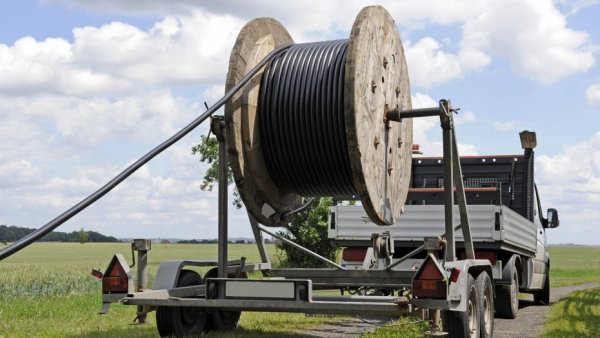Testing of cables 6 - 10 kV DC - answer to the question
A question
Does rectified DC test voltage affect the service life and dielectric strength of 6-10 kV high voltage cables? If a 6-10 kV cable is laid, but has not been used for a year, but during its tests, damages are found, what is their cause? When the cable was delivered after installation, it was tested and showed good results.
Answer
Each cable line is tested, together with the associated connectors and lugs, before it is put into service.
The purpose of the specified test of the cable line is to check its ability to withstand the operating voltage as a whole. Thus, these tests serve as a control check of the correctness of the laying of the cable and the installation of connecting and terminating connectors on it.
This test is in no way an insulation test of the cable itself, which is performed by the inspection department at the factory. The DC test voltage regulations do not affect the service life of the 6 kV and 10 kV cable insulation.
DC breakdown causes a small break in the insulation between the conductor and the metal sheath. The shoot around the puncture does not extend beyond the puncture and does not leave the branched shoots and carbonization inherent in AC decay. The absence of insulation breakdown by breakdown during the test is characteristic only of cables tested with DC voltage.
Laboratory tests and experience in the operation of cable networks have established:
-
if there was no damage during the DC test, then the insulation of the cable line remains completely intact;
-
the presence of damage means that the cable line has had a local deterioration of the insulation that would break during its operation, while the defective section with the location of the damage must be cut out and the line must be repaired with a connecting device (or end) connectors , then the cable line must be tested again;
-
the destruction of the insulation in one place of the cable line does not weaken its other sections.
The value of the ratio of the direct current test voltage to the working voltage of the cable during commissioning of the cable line and during preventive tests during operation was obtained experimentally.
The experience of operating cable lines with a voltage of up to 10 kV has established that when the line is put into operation during a test with an increased DC voltage, only very coarse local defects in the insulation of the cable or connectors can be detected, which are formed along time of transporting the cable, its laying and installation of connectors.
After a direct current test, a number of defects may remain in the cable line, which over time, under the influence of temperature, moisture and other factors, can lead to failure at this weakened point.
The specific cause of these local defects can only be established by opening the defect site, checking the condition of the sections of the cable line closest to the defect, disassembling the cut element of the cable line in laboratory conditions (or in the workshop) and a complete test of the insulation of this element for lack of moisture.
If the cable line has not been connected to operating voltage for a year and in this sense has not worked, this does not mean that its route should not be monitored.
In order to avoid mechanical damage to the cable line through excavations without the permission of its owner, a procedure for regular tours of the cable route should be established, the executive documentation of which should be submitted in a timely manner to take into account its location when carrying out earthworks in the city.
Thus, mechanical damage can cause a cable to fail in DC testing.

